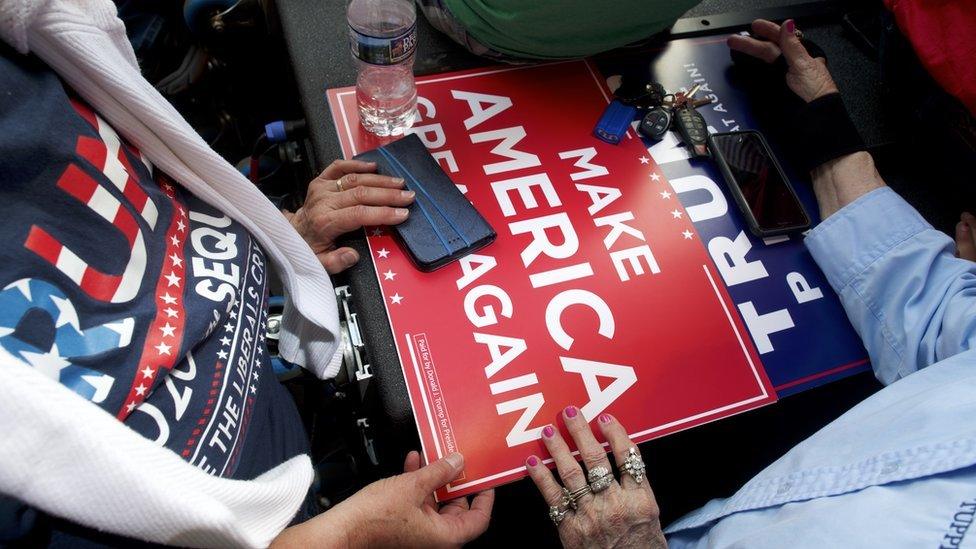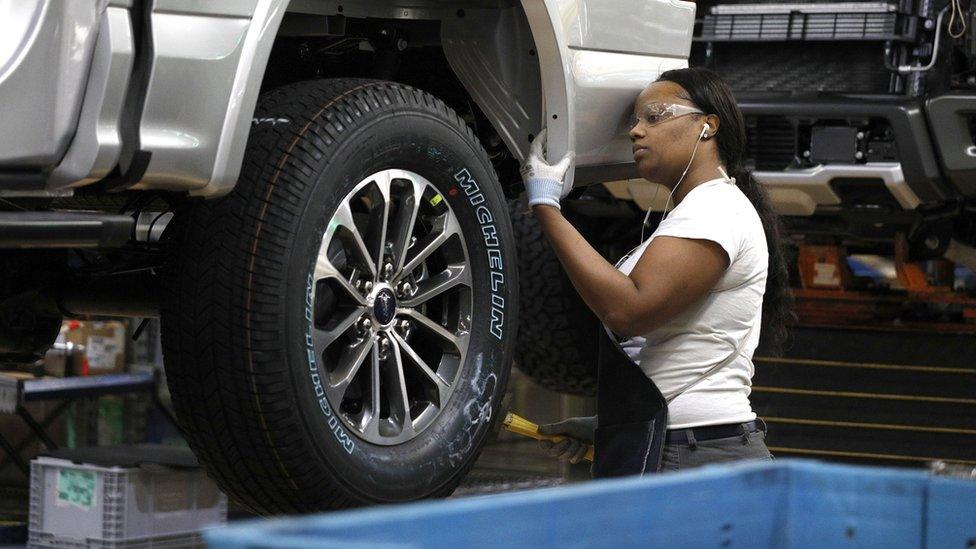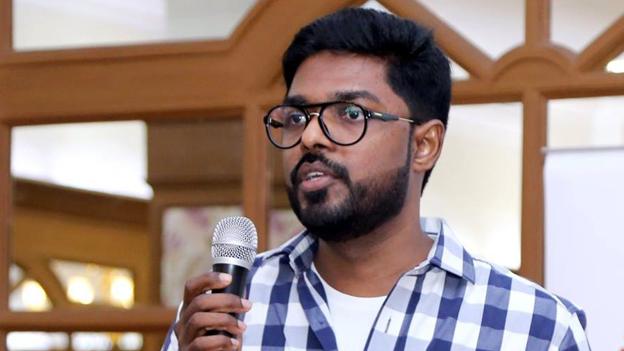Feeling the impact of Trump's foreign worker squeeze
- Published

Jiri Stejskal first came to the US when he was he 27
Jiri Stejskal is the type of entrepreneur that helps the US economy to flourish.
The 58-year-old runs a successful translation business on the outskirts of Philadelphia.
His company - Cetra Language Solutions - employs 35 people and has an annual turnover of $5m (£4m).
His high profile clients include food giant Nestle and the US defence department.
Mr Stejskal also happens to be an immigrant to the US. He arrived in the country in 1988 as a political refugee from the former Czechoslovakia, and turned his life into a business success story.

President Trump's policies do have significant support
This is relevant, because under President Trump's continuing "America First" policy, US companies are being told to hire more home-grown Americans instead of giving jobs to people from overseas like Mr Stejskal.
In fact, two years ago the president signed the Presidential Executive Order on Buy American and Hire American., external
This called on US government agencies to tighten up the immigration system, including a key temporary work visa called H-1B.
The name may not be memorable, but this visa allows US firms to hire skilled foreign workers for a three-year period.
Mr Stejskal says that it is now increasingly difficult to get an application approved, and new figures back him up.
In 2017 the rejection rate for H-1B requests was 13%, but this year it has risen to 32%, according to a survey last month by non-partisan think tank National Foundation for American Policy., external
At the same time, it found that the rate of rejections for applications to extend current visas for a further three years rose from 3% to 18%.

US firms wanting to employ overseas workers now have to jump through more hoops
"This is misguided protectionism," says Mr Stejskal. "It is clear that behind these policies is a will to cut all immigration in a country founded by immigrants."
He adds that while he previously recruited two people via the visa per annum, he hasn't attempted it this year.
Mr Stejskal says this is because the US Citizenship and Immigration Service, which handles the visa, kept asking for more and more information, officially known as requests for evidence (RFE).
"The constant requests for evidence we have submitted over and over, and the delays, discourage me from further hiring H-1B visas," he says.

Global Trade

Elizabeth Ricci, an immigrant law expert, says that the numbers of RFEs are soaring.
"Two thirds of last fiscal year's H-1Bs were issued RFEs," she says. "The year before less than half.
"They slow down a case, and make it much less desirable for an employer to use foreign talent."
She adds that if a company seeks help from an immigration lawyer, it all adds to their legal bill.
One such business currently stuck in this position is Virginia-based software firm Phone2Action.
Its chief executive Jeb Ory says he has now spent thousands on legal fees linked to an application for a H-1B for a highly skilled Ghanaian engineer, which is still unresolved after more than a year.

Jeb Ory is struggling to be able to employ an engineer from west Africa
Mr Ory fears that if companies like his cannot employ competent people from abroad it will "ultimately hurt the American economy".
Numerous studies back up his worries. More than half of the software developers in the Seattle area - which is home to Microsoft - were born outside of the US, according to a 2018 report by the Seattle Times newspaper., external
Meanwhile, Forbes magazine told its readers at the start of this year, external that almost half of the companies on the Fortune 500 list of the largest US firms were founded by first or second-generation immigrants.
Yet applications for H-1Bs are falling. Official figures show that there were 236,000 in 2016, 199,000 in 2017, and 190,098 in 2018.
While US companies apply for the visa on behalf of the would-be immigrant, the biggest recipients of H-1Bs are Indian nationals, followed by people from China.
A leading scientist at a Chinese university says he is pleased that fewer students from his country seemingly now want to work in the US.
"There is no longer a brain drain for China," says the academic who wished to remain anonymous.
"The fact that we are treated as spies in America... and China's exploding productivity growth make Chinese students invest their ingenuity at home."
Across in India, 30-something entrepreneur Mani Karthik quit the American dream in 2017.

Mani Karthik helps skilled Indian workers return to India from the US
He had spent seven years working in Silicon Valley, but says that the increasingly restrictive visa system, and concerns about what he saw as a growing hostility to immigrants made him go back to India.
He now assists other entrepreneurial and ambitious Indians to return home from the US and find good employment.
"I have helped at least 500 people relocate back to India," he says. "We are bringing the once-gone brains back."
However, despite the decline in applications for the H-1B visa, they still exceed the amount that are given out every year to businesses. This is set at 65,000, plus an additional 20,000 spaces per year for foreign students who have gained a masters degree from an American university.
The Trump-voting crabbers missing out on foreign workers
Sarah Pierce, a policy analyst at the Migration Policy Institute, a US think tank, says: "The US economy is doing really good right now.
"So, even though President Trump is creating a hit on the H-1B programme, to the extent that there are less people interested in coming in, and more people get kicked out of it... the supply of immigrants who are interested in coming to work in the US, and the supply of employers that are interested in bringing them here, remains huge."
Meanwhile, lawyer and businessman David Reisher, owner of New York-based Legal Advice Group, says that President Trump's efforts to give more jobs to Americans was "a common sense plan".
"It will help put Americans back to work without requiring any major new spending," he says.
Yet back at Cetra Language Solutions, Mr Stejskal is now thinking of creating employment overseas instead: "I'm considering hiring foreign nationals in offices abroad."